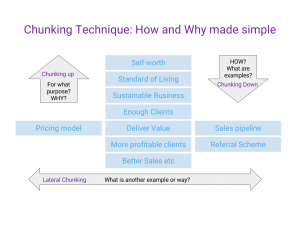 By the fourth sessions with our Bangladesh clients, the need to keep it simple is becoming clearer. Our clients are not really doing as we expect when we set them tasks. We are beginning to see the effects of cultural diversity. Western life and workplaces bring enormous complexity. Trying to influence people to change is hard enough already. When they see the world profoundly differently, it is harder still. Bangladeshi people are very eager to please and tell us what they think we want to hear. Saying “Yes, we will do as you ask” is very different from thinking “I don’t get it, but don’t want to say so”. The two very often go together, but it takes an experience like our project to see it in action.
By the fourth sessions with our Bangladesh clients, the need to keep it simple is becoming clearer. Our clients are not really doing as we expect when we set them tasks. We are beginning to see the effects of cultural diversity. Western life and workplaces bring enormous complexity. Trying to influence people to change is hard enough already. When they see the world profoundly differently, it is harder still. Bangladeshi people are very eager to please and tell us what they think we want to hear. Saying “Yes, we will do as you ask” is very different from thinking “I don’t get it, but don’t want to say so”. The two very often go together, but it takes an experience like our project to see it in action.
So how do we deal with it?
Keep It Simple Sage
There are various descriptions for the KISS principle – some more polite than others. Sage scholars spread seductive simplicity. It is a pleasing novelty to behold. For most of us it is something that we need to learn and practice. But motivation and value proposition are complex concepts. Warning signs should flash in our heads when clients want to take things away to think about them. It suggests that they are not quite getting the concepts. To communicate them effectively we need to distil their essence into bitesize actionable chunks. By picking off individual chunks we are able to test understanding there and then by asking questions. But keep it simple. High level concepts tend to be abstract. They are easy to agree with, but less easy to action. To bring about change, we need both. Actionable tasks are independent of external constraints and contextually familiar. Ideally, as you discuss them with your client, they will already be formulating a plan of action in their head
A good NLP technique for identifying contextually actionable tasks is called chunking.
Keep it simple: revealing how and why with chunking

The concept that our clients want a sustainable business is understandable. However, the action to achieve it is not readily apparent. Asking “what would give you a sustainable business?” might elicit the answer “enough clients”. Asking how to get enough clients could lead to “by delivering value to them”. These are examples of chunking down. The actual words used by clients will be rather different. One one level this does not matter, the technique works irrespective of the parlance. On another level, the words matter a great deal. Clients naturally chose words that resonate with the way they see the world helping them to understand and you to bridge any communication barrier.
Even the concept of delivering value to customers might seem a little abstract so we have 2 choices. We can either continue to chunk down beyond helping customers increase sales or we can go laterally. If delivering value to customers secures more of them, what is another way to achieve the same objective. I illustrate 2 options in the diagram. Going left, the right price model should help us secure more business. Going right, creating a sales pipeline should also secure more business. So we could pick just one or two to work on. Giving clients choice and asking them how they propose to progress the action immediately engages them with the how and why.
Making Change Simple
If you examine the reasons why most change programmes fail to achieve change, it typically comes down to 2 things. Either people won’t change because they do not understand why or they can’t change because they don’t know how. Our aspiring leaders from Rolls-Royce are really starting to understand the dynamics by experiencing it for real. In this blog we have described knowing know. In the next one it is more about why

